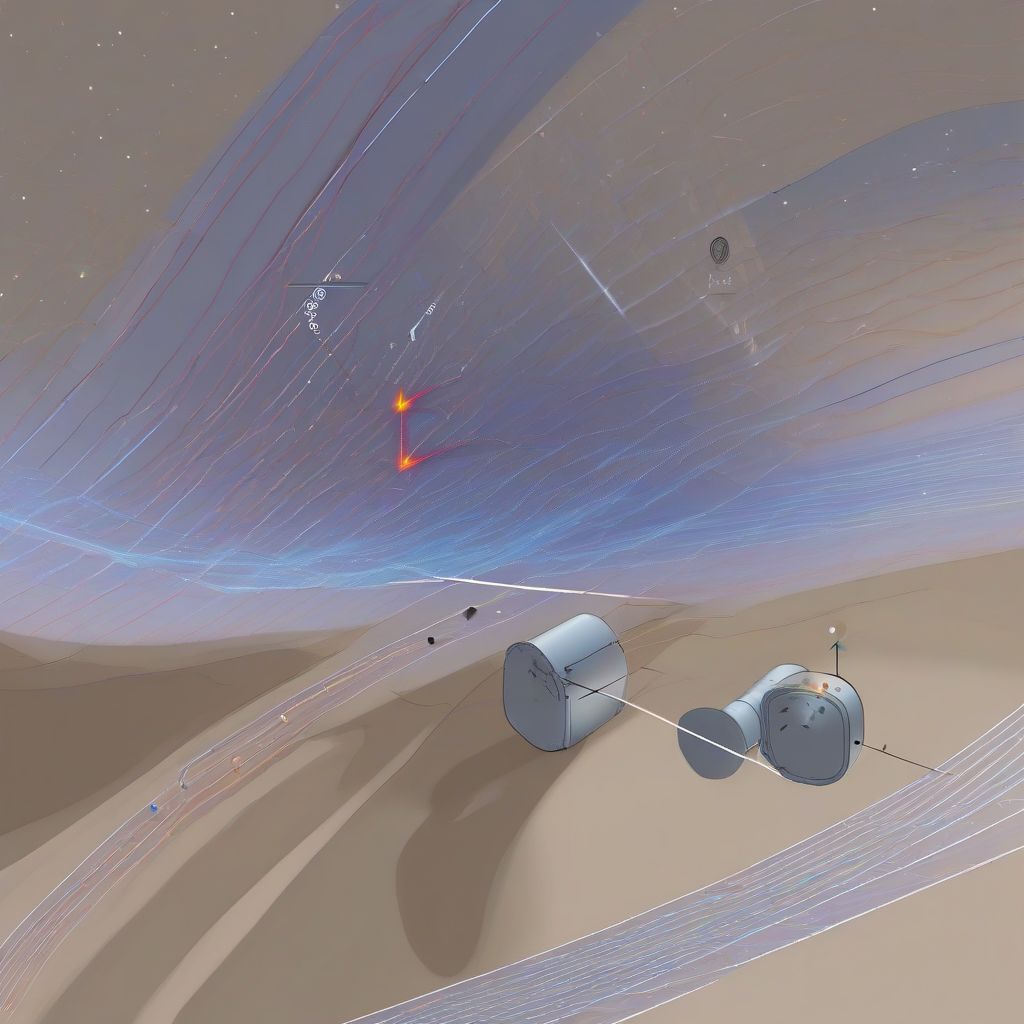Imagine the universe not as a silent movie, but as a symphony, filled with whispers and roars, crashes and hums. For centuries, astronomers have relied on light—visible, infrared, X-ray, radio—to study the cosmos. But now, a new instrument has joined the orchestra: gravitational waves. These ripples in spacetime, predicted by Einstein over a century ago, are providing an entirely new way to listen to the universe and are revolutionizing our understanding of some of the most violent and enigmatic events in the cosmos.
A New Window to the Universe
For millennia, our understanding of the universe was limited to what we could see. The advent of radio astronomy in the 20th century expanded our view, but gravitational waves offer something truly unique: a window into events that are otherwise invisible, or barely perceptible, even with the most powerful telescopes. These waves, generated by accelerating massive objects like black holes and neutron stars, carry information about their sources and the nature of gravity itself.
Listening to the Cosmos
The first detection of gravitational waves in 2015, by the Laser Interferometer Gravitational-Wave Observatory (LIGO), marked a watershed moment in astronomy. This detection, from the merger of two black holes over a billion light-years away, confirmed Einstein’s theory of general relativity and opened up a new era of “multi-messenger astronomy.” This approach combines observations of gravitational waves with traditional electromagnetic observations to provide a more complete picture of cosmic events.
Unveiling the Secrets of Black Holes
Gravitational wave astronomy has provided unprecedented insights into black holes. Before LIGO, black holes were largely theoretical objects, inferred from their influence on surrounding matter. Now, we can directly observe the mergers of black holes, measure their masses and spins, and learn about their formation and evolution. This information is crucial for testing our understanding of gravity in the strongest regimes and for exploring the role of black holes in the evolution of galaxies.
Probing the Early Universe
Gravitational waves also hold the potential to probe the very early universe, a period inaccessible to traditional telescopes. The Big Bang itself is thought to have produced a background of gravitational waves, a faint cosmic hum that could reveal crucial information about the universe’s first moments. Detecting this primordial gravitational wave background is a major goal of ongoing and future research.
Understanding Neutron Stars
Neutron stars, the incredibly dense remnants of massive stars, are another key target for gravitational wave astronomy. The merger of two neutron stars, observed in 2017, not only produced gravitational waves but also a powerful electromagnetic counterpart, including a gamma-ray burst and a kilonova. This event provided crucial information about the origin of heavy elements like gold and platinum, confirming that these elements are forged in the fiery aftermath of neutron star mergers.
The Future of Gravitational Wave Astronomy
The field of gravitational wave astronomy is still in its infancy, yet it has already produced groundbreaking discoveries. Future detectors, like the planned Einstein Telescope, promise even greater sensitivity, allowing us to detect fainter signals and explore even more distant reaches of the cosmos. These advancements will undoubtedly lead to further breakthroughs in our understanding of the universe, from the nature of dark matter and dark energy to the origin of the universe itself.
 Gravitational Wave Detection
Gravitational Wave Detection
A Symphony of Discovery
“Just as a doctor uses a stethoscope to listen to the internal workings of the human body, gravitational wave astronomers use detectors like LIGO to listen to the heartbeat of the universe,” says Dr. Alessandra Buonanno, Director at the Max Planck Institute for Gravitational Physics (Albert Einstein Institute). “Each chirp, each rumble, each whisper tells us a story about the cosmos, a story we couldn’t hear before.”
Conclusion
Gravitational wave research has fundamentally transformed astronomy, providing a new lens through which to observe the universe. From the mergers of black holes and neutron stars to the potential for probing the early universe, gravitational waves are unveiling secrets that were previously hidden. As the technology continues to advance, we can expect even more profound discoveries in the years to come, further enriching our understanding of the cosmos and our place within it. What mysteries will these cosmic whispers reveal next? Share your thoughts and speculations in the comments below and let’s continue this exciting journey of discovery together. Be sure to explore our other articles on the latest advancements in space exploration and astrophysics.



